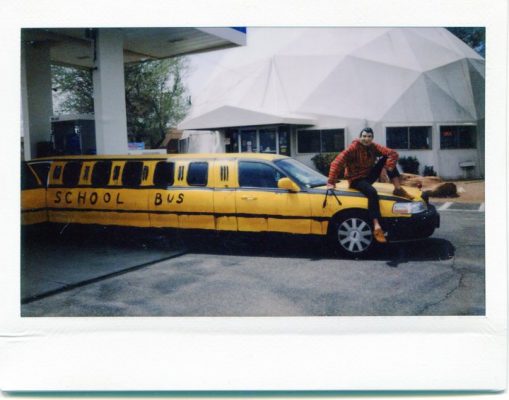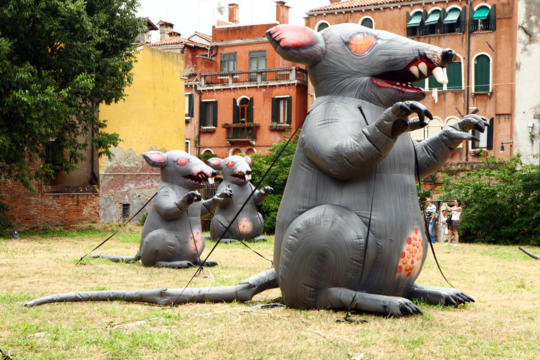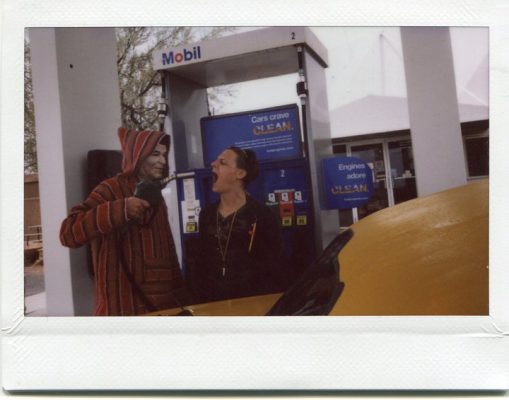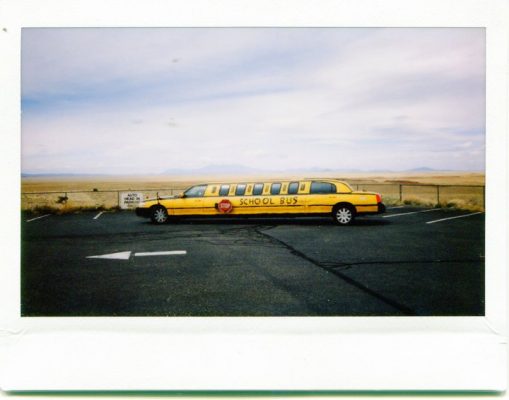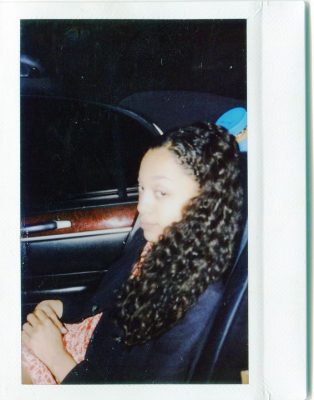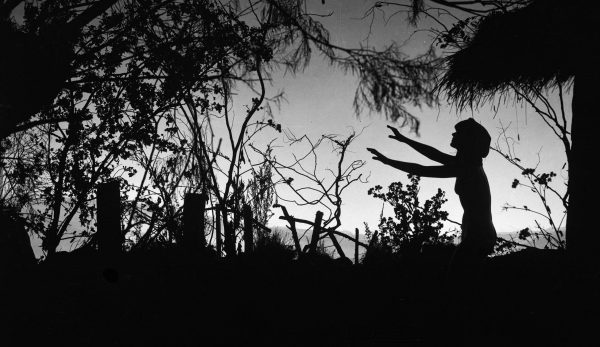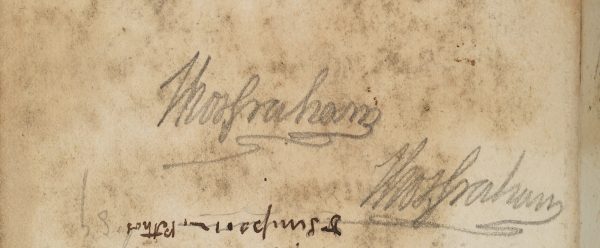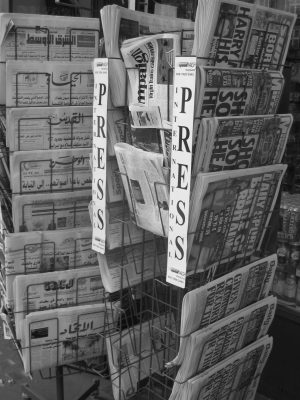Here are some details of art history that may or may not be true:
In 2008 I was working at the Whitney Museum of American Art. It was my first job out of college – I know, I know. Except the problem was that the Whitney is on the Upper East Side and I’m a downtown girl at heart, born and raised in the bowels of the East Village. Working on the Upper East Side has a certain effect on a person like myself – a person who grew up in a studio apartment on Saint Mark’s Place with two bohemian parents who suggested activities like ‘drawing to music quietly’ in Middle School in lieu of going to see R-rated movies with boys that would inevitably try to put their hands up my skirt, and who regularly gifted me copies of everything from Karl Marx to Sun-Tzu with meaningful handwritten notes inside (‘You are the future’; ‘Save this planet from itself’; ‘Revolt! Be mutinous!’) even when I explicitly requested gift certificates to shitty stores that weren’t age appropriate like Victoria’s Secret (to buy bras I didn’t have the tits for), or Joyce Leslie (to buy club clothes for clubs I was too young to get into). Bottom line: I was a fish out of water. And the Upper East Side sucks, man. Having just spent four years in Middle America grinding out college at Macalester, I was expecting to come back to New York and slay the art world. I mean, I really wanted to fuck shit up. But as the quiet irony of post-college work goes, that which is most coveted – a job, to cure the cancer that is student loan debt in America – is often the same thing that makes your soul feel as if it’s been run through the inferno.
Turned out the super competitive position I had landed at the Whitney was also super stifling. Though the goal was to do programming for young audiences, which promised to be exciting, there was some sort of force-field that seemed to always be separating the art on the wall from the artists that were responsible for producing it – people weren’t talking to one another. Artists were in and out of the museum, integrated into that weird thing called ‘public programming’ which was amorphous, often exclusive (yet mysteriously ghettoised from the rest of the institution), and, as a result, altogether a betrayal to the word ‘public’ (Arendt would be pissed). Things were confused. It wasn’t the Whitney’s fault. It wasn’t the artists’ fault. And it certainly wasn’t the art’s fault, poor thing. But in 2009 everything was all mixed up and for a downtown art kid who had just spent college years reading about the Guerrilla Girls and idolising the chaos of Carolee Schneemann’s Meat Joy, everything just seemed so conformist and, well, sterile.
This was why when a friend of mine called me up in the summer of 2009 and told me about some gang of dudes who were throwing social gatherings for artists somewhere in Bushwick that sounded of a similar vintage to Warhol’s Factory fêtes, I knew I had to go see for myself what was going down. I remember taking the call in bed, my typical landing spot between the end of my 6 p.m. work day at the Whitney and the start of my 10 p.m. evening plans which – in accordance with the majority of recent depressed college graduates in the world – consisted of my drinking several glasses of whiskey in my underwear with my ‘best friend’ of a roommate, putting on some semblance of an outfit, and going somewhere dark where the music was loud enough to give us an excuse to not talk to one another.
‘What are you doing right now?’
‘Pre-gaming.’ (I actually had been half asleep.)
‘Well get over to Bushwick tonight, there’s this party at this place I think you need to know about.’
I didn’t go. But I did Google. And shortly thereafter, I emailed the Bruce High Quality Foundation. Three months later they emailed me back. And that, my friends, is how I ended up walking what felt like twenty miles from the wrong JMZ stop on a hot New York City summer day to a wood-shaving-swept studio at 1100 Broadway, the birthplace of many things the world knows as Bruce.
I won’t tell you what happened that day, at that first meeting. That part of the story lives and dies with me – this I swear, I have taken that oath. But it marked the first step on a journey that would lead to the Foundation offering me a paid position as part of their team in 2010 – ‘What will my title be?’ ‘We have no idea. Make one up.’ – the same year the Bruce High Quality Foundation University opened its doors. So started a mentorship, apprenticeship, friendship and intellectual love affair that landed me in the deep end of the art world.
For those of you unfamiliar with the collective’s – ahem, collaborative’s – oeuvre, the Bruce High Quality Foundation is not, in actuality, a foundation. ‘Bruce High Quality’ derives from the name of one of several digitised voices that used to be part of many a word-processing computer system, back in the day – remember that? There was ‘Bruce’, and then there was ‘Bruce High Quality’ (based on, strangely enough, the dulcet tones of a professor who teaches at UCLA of that same (first) name). When it comes to the selection of a title, why settle for ‘Bruce’ when you can ante-up and have ‘High Quality’? The Foundation’s mission:
The Bruce High Quality Foundation, the official arbiter of the estate of Bruce High Quality, is dedicated to the preservation of the legacy of the late social sculptor, Bruce High Quality. In the spirit of the life and work of Bruce High Quality, we aspire to invest the experience of public space with wonder, to resurrect art history from the bowels of despair, and to impregnate the institutions of art with the joy of man’s desiring.
Professional Challenges. Amateur Solutions.
Let’s get one thing straight, kid: there is no ‘Foundation’. Equally, there is no ‘Bruce High Quality’. Like Reena Spaulings of Bernadette Corporation, or Claire Fontaine, these names belong to fictional characters, characters invented to mythologise creative practice. Reena. Claire. Bruce. They’re savvy pedagogical constructions, active examples of how the suggestion of a body can be strapped with metaphor and sent out as an agent into the world to do the bidding and branding on behalf of whoever is standing behind the green curtain. The Bruce High Quality Foundation is the Wizard of Oz. And Oz is the Foundation, and, too, the Bruce High Quality Foundation University that has arisen out of it.
The Bruce High Quality Foundation University provides a platform for creative minds to meet and exchange ideas. It was there that I first got a dose of what the collaborative is all about. Then located on the third level of 225 West Broadway in New York’s Tribeca neighbourhood – the site of what was once a renowned Sufi bookstore – the ‘school’ was a bare room with little more than a projector and some chairs. This was ground zero, fondly called by those who know ‘B.H.Q.F.U.’ And ‘FU’, indeed: though unaccredited, the school aspires to be an alternative to the American MFA racket, a space where students can be teachers, and teachers, students – and, most importantly, do all of this free of charge.
Though the construct of a ‘free school’ far precedes the Foundation’s existence – the heritage stretches back through Black Mountain College, to Cooper Union, to an ocean of independent groups – the Foundation and the project that is B.H.Q.F.U. entered onto the cultural radar at precisely the right time. In the depths of Obama’s first term, when the question of just how to grapple with the problem of student loan debt in America loomed; when funding for social programmes continued to be cut across the United States; when the climate of the art world seemed diametrically opposed to the notion that creative production could serve as a tool ‘for the formulation of revolutionary demands in the politics of art’[1], starving artists needed a safe space in which to problematise and troubleshoot the condition of the world they saw around them. New York City in 2010 was punch-drunk and ready to welcome the Foundation’s disruption – performance, social sculpture, lecture, parties, exhibitions, classes, YouTube karaoke sing-alongs and all.
Bruce High Quality is a metaphorised body. Bruce High Quality is also a dead body. A dead metaphor is limitless in its potential to make and unmake worlds, build histories, create narratives. It can say anything, do anything, and never be tasked with the responsibility of looking back. Yet as a retrospective of the Foundation’s work kicks off at the Brooklyn Museum (The Bruce High Quality Foundation: Ode to Joy, 2001–2013), the question must be asked – why look back at all?
The life of Bruce High Quality Foundation thus far is part of the rise of the collective in contemporary artistic practice. Following in the tradition of greats like Gordon Matta-Clark, these collaborative projects are out holding dinners, classes, exhibitions and performances at the proverbial bar, out in the world, beyond the walls of the studio. They’re creating jobs for other artists, a questionable reality when it comes to notions of power, mobility and capital, but an important one – the employment of friends and other young people creates an economy of survival within an artistic community. This whole notion of collectivity, and the collaboration of collective practice in the art world, can be difficult for people to comprehend. It seems that these days the art collective is less an overtly political strategy as in the past with groups like ACT UP, Critical Art Ensemble, or Gran Fury[2] – where the personal was political and the brand explicitly demanded social change. Instead, the contemporary collective positions itself as a centripetal agent of participation and social lubrication. The Bruce High Quality Foundation has done this: created a space where questions can be asked, but not necessarily answered, where ideas are conceived, but not always brought to maturity. If nothing else, the group has delineated a territory within which exchange is possible, in which process is prioritised and, often, performed. Perhaps this is itself the politic. And perhaps this is what the group means to say in the pithy summation of their mission statement: ‘Professional Challenges. Amateur Solutions.’ In an art world faced with the challenge of increasing professionalism, in which the artist and the art itself are expected to arrive pre-packaged for consumption, the promotion of the ‘amateur’ is potentially riotous, impregnated with convivial desire and radicalism, providing room for play in an art world that, to its detriment, often takes itself too seriously, or too seriously in the wrong way.
Though there might be a few bars involved (and a myriad of collectivised artists walking into them), this is not a joke. A joke requires a punch-line and though the collective – ahem, collaborative – the Bruce High Quality Foundation finds its innovative strength in excellent punch-lines, this is a serious article in a serious publication and is not meant to be funny. You don’t laugh at history. So wipe that goddamn smile off your face.
On the eve of the Foundation’s retrospective, twelve bullets will be fired into the air, into the starry skies above Prospect Park. In true mythic American tradition, these shots are homage to a fallen hero. Striped red, white, and blue, one shot for each year passed since the 11 September death of social sculptor Bruce High Quality (R.I.P., pour one out, East Coast, West Coast). Bruce High Quality’s tragic demise continues to be a reminder to take to heart a hearty appetite for Freedom Fries along with a side of the nationalist adage ‘Never forget.’
So – don’t. Memento mori. Remember.
Bruce High Quality, these shots sing out, calling for your resurrection. Take note of the ashes scattered in the footnotes of what follows.
***
I. Reena Spaulings, Claire Fontaine, and Bruce High Quality walk into a bar in Brooklyn, New York on 10 September 2001.
Reena is wearing a neon jumpsuit – mesh, naturally – and is very stoned, having just rolled a spliff in her car outside in the parking lot and smoked it with the windows closed and NPR turned up real loud. It’s Sunday. Through the speakers – just before she turns off the ignition and uses a Goody bobby pin to hold a mutinous roach still between her lips – Prairie Home Companion tumbles on with Garrison Keillor manning the ship with witty shit like, ‘A girl in a bikini is like having a loaded pistol on your coffee table – there’s nothing wrong with them, but it’s hard to stop thinking about it.’ And, later, ‘I think the most un-American thing you can say is, “You can’t say that.”’[3] Reena, polishing off the roach, silently agrees before heading inside.
Inside, Claire’s lit a cigarette and is heading for the jukebox. She’s not wearing a bra. Her shirt is striped with thin blue lines, a topography over the hiccups of flesh beneath cotton made in 1978 and then worn thin by 1988, 1990, and a particularly aggravating Y2K scare where Claire spent a week in the woods tripping on mushrooms and waiting for the world to end. She hangs onto the ’box as if to the helm of a ship sailing through tempest – tightly, knuckles white, steadying her balance with a neatly manicured hand, fingernails polished blood red, same as her lips that are curled around the edge of a martini glass soiled with fingerprints.
At home, earlier in the evening, Claire had played Gillian Hills’ 1960 rendition of ‘Zou Bisou-Bisou’ off of YouTube on repeat, masturbated with Jean-Paul Belmondo’s lips in her mind’s eye, eaten some chêvre and stale baguette, and finished off two glasses of a particularly grotesque Châteauneuf du Pape. Halfway through her third glass – the dregs of a bottle leftover from a time she can’t remember – she decided that she needed to quit moping around the house and take herself out on the town for a big girl cocktail.
Bruce is a bit more understated: despite an Indian summer, he’s wrapped himself in a felt blanket. He’s got a pack of Marlboro Reds rolled into the sleeve of his t-shirt. T-shirt reads: J’TAIME BRUCE . On his right arm the words OLD MAN are tattooed in dark gray ink. He’s got ash on the tips of his shoes. His face is covered in a thin layer of animal fat, picked up at the butcher around the corner from his spot at 1100 Broadway in Bushwick[4]; he’s sweating a bit. He’s got a rubber mask in his pocket (listen closely, kid – remember this detail for later). So, Bruce walks in, doesn’t bother looking around, makes a move toward the bar. He leans on the mahogany. He orders a Budweiser. He scans the room. He blinks.
II. The funeral was held at Judson Memorial Church. It was quiet, understated – just what Bruce would have wanted – not exactly a production of Cats!, something a bit less aggressive and not so openly NEW YORK! to appease the family flown in from places like the somewhat-suburban outskirts of whiteflight Chicago and the small pond psychosis of Easley, South Carolina. The family mourned. Bruce’s mother and sister arrived with freshly trimmed bobs, dressed in black, a detail that barely was recognised in the streets of the city, what with all the finger-snapping bohemians scurrying about. Bruce’s father, a husband first and foremost, but a painter in his heart of hearts, had composed a lyrical rendering of his dear boy in Rembrandt acrylic on board, that, due to the paint’s saturation in linseed oil, gave the empty space around Bruce’s head a holy orb-like quality as it stood at attention, hung with care above the coffin.
Claire and Reena were there too, not to be forgotten. The two girls stood in the back of the crowded room, holding hands, a tangle of tight white knuckles and polished red fingernails, perspiring on contact. An ex-girlfriend of Bruce who insisted (somewhat inappropriately) on being part of the pomp and circumstance lights a few candles, sings a song no one knows, plays a few bars on the piano. Later in the programme, Bruce’s mother – aspiring to sound cosmopolitan so as to honour the legacy of her son’s love for the dirty streets of his beloved New Amsterdam – would comment in a whisper to her nearby daughter on the ‘lovely gay couple’ that wept silently as Saskia Bos[5] read her remarks about her ‘favourite student’ and his days at Cooper Union from the podium next to an incredible spray of white lilies, sender unknown.
III. The Foundation was built thereafter in Bruce High Quality’s name: the Bruce High Quality Foundation. At the memorial ribbon-cutting at 1100 Broadway – the place Bruce once called home – some of Bruce’s boys from Cooper[6] days read aloud, standing on a table in the centre of the room. Their remarks are written on the palms of their hands, choreography scrawled in Sharpie that crawls up toward their elbows, bleeding and branching off in the heat.
The first: ‘An important aspect of Bruce High Quality’s story is that there is no story. He died on 11 September. Beyond that, we know nothing.’
The second: ‘He’s a myth disembodied – ’
The third, an interruption to the second: ‘ – which ultimately means he’s simply a framework for whatever the Foundation wants to do at the moment. He’s something to play off of, but there’s no there there.’
Three clouds of smoke, released like mushroom clouds into the air.
Cigarette butts dot the round yellow table beneath their boots, a constellation that will later be gathered up and archived for future Foundation projects, remnants of a process in progress.
George Condo[7], Stavros Niarchos III[8], Lola Schnabel[9] and her little brother Vito[10], and some dude in pyjamas (with a scalding hot girlfriend searing his weathered arm – a detail not to be overlooked) whistle and cheer, raising mutual glasses of scotch[11] into the air, ice cubes clinking with excitement, a small shower of high proof christening the crowd below with a hiss.
Somewhere above, George Maciunas[12] and Warhol[13] fist-bump and do a line off of a divine toilet seat together.
IV. In 2007 sculptures across Manhattan get the wind knocked out of them in a city-wide series of tackles, physical attacks on unassuming public monuments which have a reputation of assuming themselves untouchable. Boy, were they wrong. Robert Clark’s ‘LOVE’[14] in Midtown gets in a tussle with an all- American corn-fed quarterback and is rumored to have slunk away with a black eye and a fat lip. No one cares, however, because, turns out, Robert Clark was from Indiana; ‘real’ New Yorkers do, however, come to LOVE the postage stamps. Amen, Robert Indiana, godfather of Pop!
V. HELL YES.[15] HEAVEN FORBID.[16]
Bruce is dead. Beyond that, we know nothing.
VI. Teach us!
VII. 11 September 2010: Bruce High Quality Foundation University (B.H.Q.F.U. – B.Y.O.B. and B.Y.O.University!) opens in Tribeca. From the steps at 225 West Broadway a body with a rubber Reagan mask on shouts through a megaphone to a small cohort of kids, disciples to the new discipline of B.H.Q.F.U., each dappled with paint splatter and Eau de Yesterday’s Fête: ‘B.H.Q.F.U. is a learning experiment where artists work together to manifest creative, productive, resistant, useless and demanding interactions between art and the world.’ (APPLAUSE)
VIII. The 2010 Whitney Biennial.[17] But who cares about those old stiffs on the Upper East Side? As a salacious Holland Cotter so aptly writes for the local rag: ‘Who Needs the Whitney? They Have Their Own Show’[18] – that is, the 2010 BRUCENNIAL: MISEDUCATION.[19]
A blizzard shuts the machine that is Manhattan down, but still the people come. At the opening, Jeffrey Deitch’s[20] bespectacled visage is said to have been spotted floating above the door of one of the roofless Porta-Potties installed outside of the glass doors of 350 West Broadway.
Roselee Goldberg[21] emerges from the feathers and fog of BRUCEFORMA upstairs[22] and stands in a corner, her eyes flashing as she asks a teenage passerby who doesn’t recognise her if she can bum a smoke.
IX. WE LIKE AMERICA AND AMERICA LIKES US.
A wide-eyed young reporter, on his first assignment, rings up the school: ‘I’ve heard the number of participants in the Foundation has oscillated throughout the years,’ he asks. ‘Is Bruce High Quality a collective, or a collaboration? Is there a difference between the two? How many of you remain after all this time?’
The phone crackles. Somewhere in the background a recording of Lorraine Ellison’s ‘Stay With Me, Baby’[23] is on loop.
Before the line disconnects, a reply: ‘No comment.’
X. ‘Extra! Extra! Read all about it!’ The Foundation piles their offices into a stretch limo painted like a school bus. Four dudes and a lady go across the country for thirty-two days straight and TEACH 4 AMERIKA (Credit: CREATIVE TIME)[24]. Shouting from the rooftops to art institutions and art students in eleven different cities: ‘Mothers of America let your kids go to the movies!’(Credit: O’Hara[25], ‘Ave Maria’)
XI. A quick stop in Venice to ARGUMENTA[26]. In tow: Terence Koh[27] mulling about the Sestiere Castello all in white, waiting for his curtain call.
A cigarette and a glass of prosecco in the lobby of Lever House with Richard Marshall and Aby Rosen![28]
Freedom at Brown University?[29]
The dream of B.H.Q.F.U. lives on in the East Village:[30] ‘We do a hell of a lot with very little. It’s a space with some chairs. The rest is what people make of it.’
XII. An die freude![31] Commencing 28 June and stampeding through 22 September 2013.[32] To the same young reporter, no longer so young and not quite so wide-eyed, this time in an e-mail: ‘We don’t think of it as working backwards, it’s just working out of time, outside the stultifying prescription of “emerging”, “mid-career”, “late-career.”’
An Ode grows in Brooklyn, apparently – next to that old tree Betty Smith[33] yammered on and on about.
[1] Benjamin, Walter. ‘The Work of Art in the Age of Mechanical Reproduction.’ 1936.
[2] Russell, L. ‘Beauty & The Beast: Collectivity and the Corporation’. Guernica, 27 April 2012.
[3] Yes, these are direct quotes.
[4] That’s Brooklyn y’all. Pour one out.
[5] Dean of The Cooper Union for the Advancement of Science and Art.
[6] Cooper Union, that is.
[7] b. 1957. American contemporary artist.
[8] Greek shipping tycoon. Multi-billionaire. Who cares when he was born.
[9] Lola Schnabel (b. 1980) is an artist and an actress. She is the daughter of artist and filmmaker Julian Schnabel (b.1951).
[10] Vito Schnabel (b. 1986). The son of artist and filmmaker Julian Schnabel, the brother of Lola Schnabel. Vito is the dealer who represents the Bruce High Quality Foundation internationally. Other accomplishments? He has also apparently dated Elle Macpherson (b. 1964) and Demi Moore (b. 1962). Stars – they really are ‘just like us’.
[11] Glendronach, 25 years old, originally opened ‘by accident’ by an intern forced to stay late at the office to finish an Excel document.
[12] 1931-1978. Lithuanian-born American artist. The father of Fluxus.
[13] If you are looking for a footnote about who ‘Warhol’ is, that is unacceptable.
[14] b. 1928. American artist associated with the Pop Art movement. Real name: ‘Robert Clark’. Alias: ‘Robert Indiana’. Created an image that integrated the word ‘LOVE’; thereafter, all over the world, sculptures were made as homage to this image. Thereafter, postage stamps were printed as homage to the sculptures.
[15] A rainbowed sign by Swiss artist Ugo Rondinone (b. 1964) that was originally affixed to the front of New York City’s New Museum in 2007.
[16] The text of a stark black and white banner that the Bruce High Quality hung from a building across from the New Museum in 2007, now also a photographic print of the Foundation’s that shares the name.
[17] The Whitney Museum of American Art in New York City has a biennial every two years. The Bruce High Quality Foundation featured in this biennial in 2010, exhibiting a video work titled ‘We Like America and America Likes Us’ that took the form of a white hearse-ambulance, purchased off of craigslist from a dude in the Midwest, with the aforementioned video projected onto its front windshield.
[18] Title of renowned art critic Holland Cotter’s article for the New York Times (25 February 2010).
[19] The Bruce High Quality Foundation has a ‘Brucennial’ every two years. 2010’s title was BRUCENNIAL: MISEDUCATION, and was presented as an alternative to the 2010 Whitney Biennial.
[20] b. 1950. American art dealer, curator, and, since 2010, the director of the Museum of Contemporary Art in Los Angeles. Before moving to the West Coast, Deitch made it big in New York City with his gallery, aptly named ‘Deitch Projects’. He also came to the 2010 BRUCENNIAL in a snowstorm and had a beer.
[21] b. Unknown. New York-based art historian, critic, author, and curator. Founder of the performance biennial (and organisation of the same name) in New York City known as Performa.
[22] The 2010 BRUCENNIAL’s take on Performa calls itself a ‘visual art performance biennial’.
[23] ‘Stay With Me, Baby’ is a piece that was originally shown in 2011 as part of Peckham’s ‘summertime sculpture project’ Bold Tendencies. It featured a grouping of inflatable rats typically known as ‘union rats’ in the United States. Union rats are often used by striking unions against their employers or against non-union contractors, a means of calling public attention to companies employing non-union labourers. For this particular installation, the rats were synched up to inflate and deflate at intervals, accompanied by Lorraine Ellison’s song ‘Stay With Me, Baby’ as a soundtrack, a commentary, according to the Foundation, on ‘individual genius, loneliness, the failings of memory, and the prospect of eternal life through history’. The piece was shown again in Berlin in 2012.
[24] TEACH 4 AMERIKA was a cross-country lecture and performance tour focusing on a drawing of attention to the failings of the for-profit MFA systems in the United States. Participants of the Foundation took this tour in a limo painted like a school bus; they made stops in eleven cities and the tour lasted for thirty-two days straight.
[25] Frank O’Hara (1926-1966). American poet.
[26] ARGUMENTA ran from 30 May through 5 June 2011, alongside the 2011 Venice Biennale. It was described by the Foundation as, ‘a dialectical interrogation of the histories of painting, patronage, politics, power, pluralism, pandering, pity, punishment, perversion, pedantry, passion, pedagogy, and pestilence.’ Terence Koh was there, too.
[27] b. 1977. Beijing-born Canadian artist. Known for wearing all white, all the time.
[28] Lever House is located at 390 Park Avenue in New York City, leased by art collector and real estate magnate Aby Rosen (b. 1960). It is the home of the Lever House Art Collection, which features rotating exhibitions for prominent artists in its lobby space. The art collection and the exhibitions surrounding it are overseen by art historian and curator Richard Marshall (b. Unknown).
[29] Freedom ran from 2 May through 3 June 2013 at Brown University’s Cohen Gallery in Providence, Rhode Island. The exhibition featured a varied selection of sculpture, video, and installation works.
[30] 34 Avenue A, 3rd Floor, New York City, N.Y. 10009. Free and open to the public. Visit www.bhqfu.org
[31] ‘Ode an die Freude’ (‘Ode to Joy’) was written in 1785 by the German poet, playwright, and historian Friedrich Schiller (1759-1805). This ode was inspiration to Ludwig van Beethoven’s (1770–1827) Symphony No. 9 in D minor, which was completed in 1824.
[32] The Bruce High Quality Foundation’s retrospective Ode to Joy, 2001-2013 at The Brooklyn Museum.
[33] 1896-1972. Smith is the author of the immensely successful A Tree Grows In Brooklyn written in 1943, her first novel.
